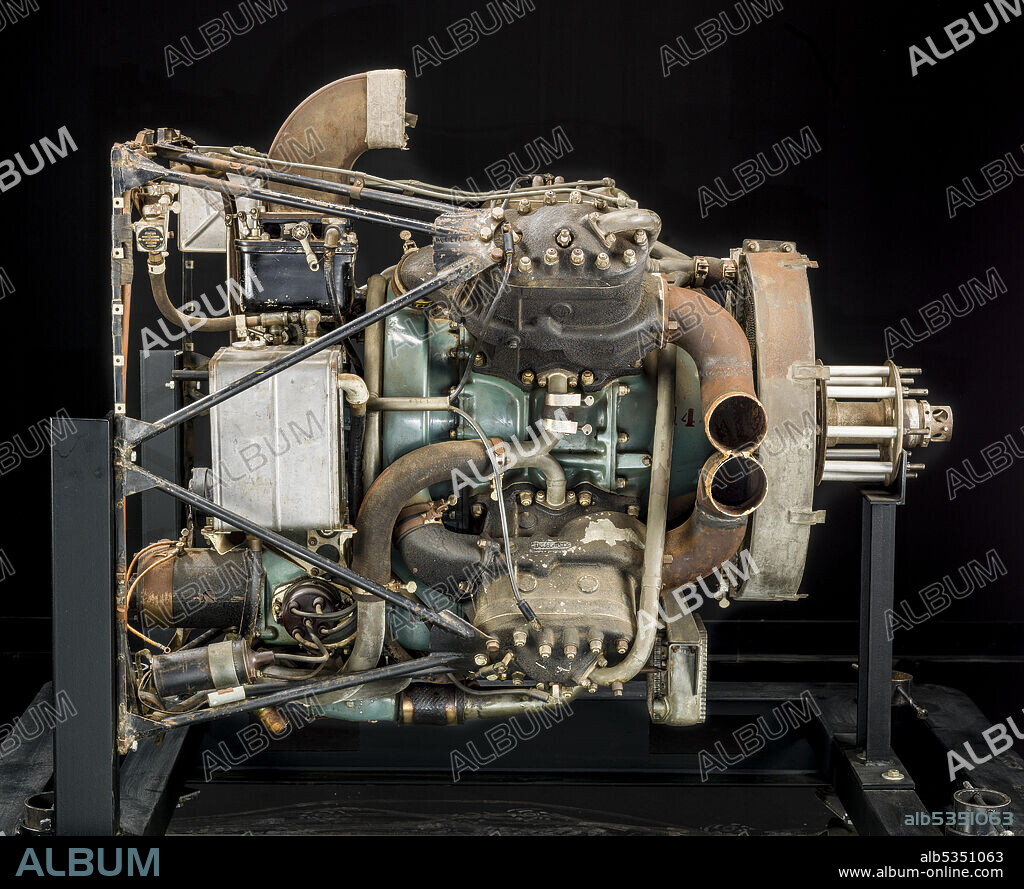alb5351063
GENERAL MOTORS. General Motors X-250, Radial 4 (8) Engine, ca. 1940. Creator: General Motors.

|
Zu einem anderen Lightbox hinzufügen |
|
Zu einem anderen Lightbox hinzufügen |



Haben Sie bereits ein Konto? Anmelden
Sie haben kein Konto? Registrieren
Dieses Bild kaufen

Autor:
Titel:
General Motors X-250, Radial 4 (8) Engine, ca. 1940. Creator: General Motors.
Untertitel:
Siehe automatische Übersetzung
A direct-drive, liquid-cooled, supercharged, two-stroke cycle engine, this General Motors engine was a very unusual design incorporating four cylinder blocks, each containing two cylinder bores with a common combustion chamber. At least one application was a small radio controlled target aircraft, and it also powered an Oldsmobile Eight automobile. Flight testing by famed racing and test pilot Tony LeVier successfully continued through 1940 as high as 7.6 km (25,000 ft.) in a Cessna Airmaster C-165, but other pressing war priorities led to termination of the project. A 1942 engineering report written by GM's Research Laboratories, led at the time by its highly regarded director Charles F. Kettering, stated that the engine had excellent power/displacement and power/weight ratios, low fuel consumption, and very low vibration characteristics. Removed from the Cessna in June 1946, the aircraft was later refurbished and flown again.
Persönlichkeiten:
Bildnachweis:
Album / Heritage Art/Heritage Images
Freigaben (Releases):
Model: Nein - Eigentum: Nein
Rechtefragen?
Rechtefragen?
Bildgröße:
6600 x 5386 px | 101.7 MB
Druckgröße:
55.9 x 45.6 cm | 22.0 x 18.0 in (300 dpi)
Schlüsselwörter:
ALUMINIUM • AMERIKANER • ANTRIEB • FARBE • FARBIG • FEUER, INDUSTRIE • FLUGMASCHINE • FLUGZEUG • GENERAL MOTORS • INDUSTRIE • KUPFER • LUFTFAHRT • OBJEKT • SMITHSONIAN INSTITUTION • STAHL • TECHNOLOGIE
 Pinterest
Pinterest Twitter
Twitter Facebook
Facebook Link kopieren
Link kopieren Email
Email
